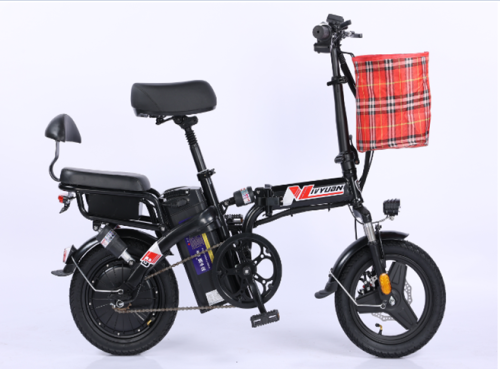

An electric cycle, often referred to as an e-bike or electric bicycle, is a bicycle with an integrated electric motor that assists with propulsion. These bicycles have become increasingly popular as a mode of transportation and recreation, offering the benefits of both pedaling and electric assistance. Here are some key features and components of electric cycles:
Electric Motor: The electric cycle is equipped with an electric motor that assists the riders pedaling efforts. The motor can be mounted in various locations, such as in the hub of the wheel or at the center of the frame.
Battery: Electric cycles are powered by rechargeable batteries that provide energy to the electric motor. The battery is usually removable and can be charged using a standard electrical outlet.
Pedal-Assist and/or Throttle: Electric cycles typically have a pedal-assist system, where the motor provides assistance as the rider pedals. Some models may also have a throttle, allowing the rider to control the motor directly.
Range: The range of an electric cycle refers to the distance it can travel on a single battery charge. The range varies depending on factors such as battery capacity, motor efficiency, and terrain.
Speed Limit: Electric cycles are often designed to comply with local regulations, which may include a speed limit for electric assistance. In many places, the motor assistance is limited to a certain speed (e.g., 20 mph or 25 km/h).
Levels of Assistance: Many electric cycles offer multiple levels of assistance that the rider can choose from. These levels determine how much help the motor provides, allowing the rider to customize the riding experience.
Design and Frame: Electric cycles come in various designs, including traditional bicycles, mountain bikes, and commuter-style bikes. The frames are often similar to those of regular bicycles.
Brakes and Gearing: Electric cycles are equipped with traditional bicycle components such as brakes and gears. Some models may have specialized features, such as regenerative braking systems.
LCD Display: Many electric cycles have an LCD display on the handlebars that provides information such as speed, battery level, and the selected level of assistance.
Charging Port: The battery can be charged using a charging port, often located on the frame. Charging times vary, but it typically takes a few hours to charge the battery fully.
Legal Considerations: Electric cycles are subject to regulations that vary by country and region. These regulations may cover issues such as maximum motor power, speed limits, and where electric cycles are allowed to operate.
Electric cycles offer an eco-friendly and efficient alternative for commuting, recreational cycling, and transportation. They provide flexibility by allowing riders to choose between pedal-only, electric-only, or a combination of both, depending on their preferences and needs.